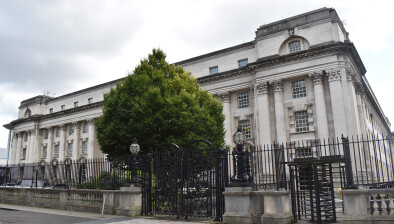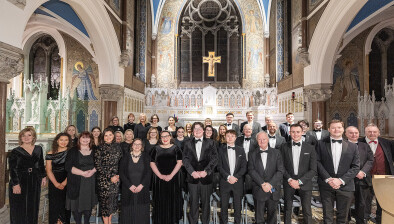NI High Court: Christian boy’s school discriminated by prioritising applications for ‘legacy students’

A Christian boy’s school in Newry discriminated against applicants by prioritising applications for “legacy students” whose fathers had been past pupils, Northern Ireland’s High Court has ruled.

About this case:
- Citation:[2021] NIQB 103
- Judgment:
- Court:High Court
- Judge:Mr Justice David Scoffield
The Board of Governors of the Abbey Christian Brothers’ Grammar School’s admission criterion (iv) was deemed unlawful. It represented unjustified indirect discrimination contrary to Article 18 of the Race Relations (Northern Ireland) Order 1997.
Prioritising applications from the children of former students was found to be discriminatory, despite the claim that the maintenance of family links was part of the preservation of the school’s ethos.
Background
Leave to apply for judicial review was previously refused based on delay, which was overturned by the Court of Appeal on 22 October 2021. They determined that an extension of time ought to be granted in this case, and remitted the matter back to the High Court for further consideration.
Discrimination
In an earlier decision, the court found discrimination had occurred based on the school’s assessment criterion (iv) prioritising the children of alumni. The court held that this put certain candidates, such as the applicant, at a particular disadvantage, having a discriminatory effect.
The respondent contended that their admission policy was not discriminatory, and this was evident when assessed between a candidate with Northern Irish origins whose father did not attend the respondent school, and a candidate with non-Northern Irish origins whose father also did not attend the respondent school.
The court found that the respondent’s proposed comparison was incorrect, because, in an indirect discrimination case, the purpose of the comparison is to determine whether the particular criterion adopted puts persons of different race (or ethnic or national origins) at a particular disadvantage when compared with others.
The court remained of the view that the appropriate comparison should be between a child living in the area wishing to attend the school who has Northern Irish national origins and a child living in the area wishing to attend the school who has non-Northern Irish national origins.
Justification of discrimination
The respondent attempted to justify any discrimination on the basis of preserving, “a core element of the school’s ethos and character… the very things which make it successful and attract would-be pupils such as the applicant”.
The court could not find a definition of this alleged ‘ethos’ and instead pointed to the preamble to its admissions criteria, as being a school which “serves the local community.” It might therefore be said to be a community school – but a family link with the school is neither necessary nor sufficient for a child to be part of the local community.
In rejecting this claim, the court emphasised that the difference between admission and non-admission was binary, and possibly determinative of the school a child disadvantaged by the criterion would attend for the next five or seven years of their education. Even if the discriminatory effect on applicants was limited, the effect on each of them was potentially significant.
Practical difficulties
The respondent also argued that the court should use its discretion to withhold relief, based on delay and the impact of the decision on the respondent and third parties.
The respondent’s concern was in relation to knock-on effects on the admissions system as a whole, including on other schools who had used similar admissions criteria, and, more immediately, on other children within the Abbey’s current Year 8 cohort.
The school’s evidence was that if criterion (iv) was quashed, 15 pupils would have been admitted to the school who would not otherwise have gained a place, and the applicant himself was still placed sixth on the school’s rank order.
The admission of 15 new pupils would require 1.5 new teaching staff (costing £78,000 per annum) and the budget for the year had already been allocated. Depending on numbers, a new and additional form class may have been required, with pupils re-distributed from the existing form classes.
The court noted that at the current stage of the school year, there may be a natural disincentive to parents seeking to move their children between schools if their child has now settled in their new school for a period of some three months.
The school was also constrained in the number of pupils by its admissions number, set under Article 12 of the Education (Northern Ireland) Order 1997; which is related to the school’s overall enrolment number set out under Article 11, which dictates the school’s accommodation and limits on class sizes. Put simply, there was, allegedly, no spare place in Year 8 for the applicant, even if ordered to do so.
Relief
The court effectively had three possible routes to admission for the applicant:
- Grant a mandatory injunction requiring the respondent school to admit the applicant. (This was rejected based on the enrolment issues discussed above).
- Grant relief in relation to the legality of the impugned criterion (either by way of certiorari or declaration) so that the applicant could return to the Admissions Appeal Tribunal. (This approach circumvented the enrolment cap issue, as students who are granted entry based on an appeal decision are ‘supernumerary’, and not counted towards admission figures).
- Advise that the Department of Education vary the school’s admissions number under Article 12(3) of the 1997 Order. (The issue here was the ranking order, where the admission number would have to be increased anywhere from 6 – 15 additional pupils, which would overburden the school).
The court was satisfied that there was “a possibility of the applicant securing admission to the school through the second option” and that this was by far a more attractive option than the third.
Conclusion
Ultimately, the court proposed to grant a declaration in the following terms:
“In the circumstances of the applicant’s case, the adoption and use of criterion (iv) in the respondent’s admissions criteria for admission to Year 8 in the 2021/22 academic was unlawful, void and of no force or effect. Accordingly, as a matter of law, criterion (iv) should not have been applied in the course of consideration of the applicant’s application for admission to the Abbey Grammar School.”
Finally, the court noted that any inconvenience and disruption to the respondent was a result of the school’s decision to adopt this criterion against Departmental guidance and in full knowledge of the Department’s warning that this would give rise to increased legal risk.








